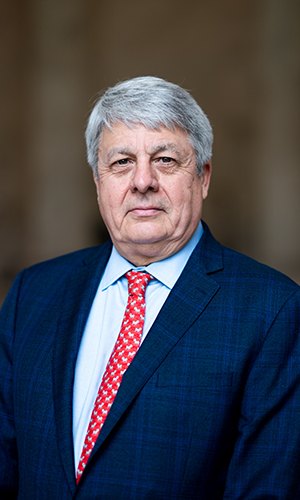Alumni Achievement Award
Carl Hulse '76
Chief Washington Correspondent, The New York Times

A seasoned journalist covering political news that impacts the nation, Carl Hulse is a trusted reporter who helps voters understand what transpires in Washington, D.C. He lives and works there as the chief correspondent for The New York Times, which he joined in 1986. That was 10 years after Hulse completed a degree in speech communication at ISU.
As an undergraduate, Hulse joined The
Vidette and was initially assigned to editing wire stories. He worked his way up to the news editor position, gaining the practical experience that helped him begin his career at the News Tribune in LaSalle-Peru. He worked at the Daily Journal in Kankakee and the News and Sun-Sentinel in Fort Lauderdale, Florida, before joining The New York Times.
While assigned to the nation’s capital, Hulse has covered 10 presidential election cycles and nearly 20 Congressional elections, which has gained him the reputation of being one of the most savvy political journalists in the country. He reports on Congress and the White House, as well as the judiciary.
Hulse has access to some of the nation’s most powerful decision-makers, which is important as he reports on such complex issues as the impeachments of President Bill Clinton and President Donald Trump. He also wrote extensively on the political ramifications following the 9/11 attacks and after rioters ransacked Capitol Hill in January of 2021 as Congress voted to confirm results of the 2020 presidential election.
As a journalist, Hulse has been featured on podcasts, by numerous media outlets, and presented keynote addresses across the country. He authors the column On Washington to provide a behind-the-scenes look at what is occurring across the nation’s capital, including increased hostility toward the media in recent years. He wrote the book Confirmation Bias: Inside Washington’s War Over the Supreme Court, from Scalia’s Death to Justice Kavanaugh. It documents the unprecedented political fight over the vacancy created by the death of Supreme Court Justice Antonin Scalia.
Hulse has received many accolades for his work, including induction into Illinois State’s College of Arts and Sciences Hall of Fame. He is also a member of The Vidette Hall of Fame.
